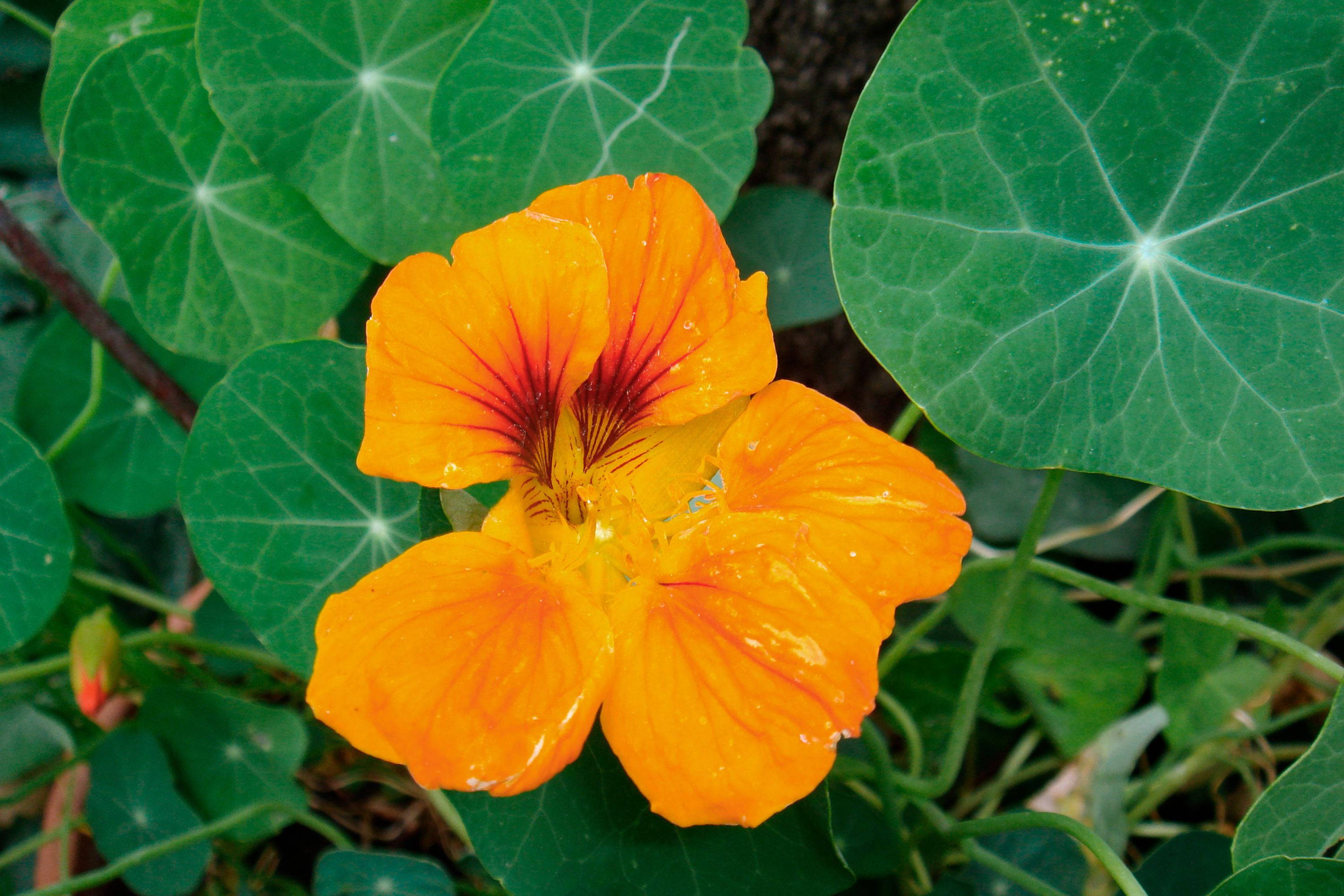Nasturtium
(Tropaeolum majus)

Description
Tropaeolum majus, commonly known as the nasturtium plant, is a beautiful and versatile flowering plant that belongs to the Tropaeolaceae family. This plant is native to South America, particularly the Andes region, but it has spread all over the world, thanks to its beautiful and fragrant flowers. The nasturtium plant is a herbaceous plant that can grow up to 30 centimeters tall, but some cultivars can grow up to 2 meters in height. Its leaves are round or kidney-shaped, and its flowers can be yellow, orange, red, or even bi-colored. In this article, we will explore the various aspects of the nasturtium plant, including its history, taxonomy, morphology, growth habits, cultivation, and uses. History and Taxonomy of Tropaeolum majus The nasturtium plant was first discovered in South America by Spanish explorers in the 16th century. They brought the plant to Europe, where it quickly became popular as an ornamental plant. In the 17th and 18th centuries, the nasturtium plant was also used for medicinal purposes, particularly to treat scurvy. The genus Tropaeolum, to which the nasturtium plant belongs, was first described by Linnaeus in 1753. The name Tropaeolum is derived from the Greek word "tropaion," which means "trophy." The plant was given this name because the shape of its leaves resembles the shields and helmets that were used in ancient times to make trophies. The nasturtium plant has several common names, including Indian cress, trophy cress, and garden nasturtium. The scientific name of the plant is Tropaeolum majus, where "majus" means "larger" in Latin, referring to the plant's larger size compared to other species in the genus. Morphology and Growth Habits of Tropaeolum majus The nasturtium plant is a herbaceous annual or perennial plant that can grow up to 2 meters tall in ideal conditions. Its leaves are round or kidney-shaped, and they can grow up to 15 centimeters in diameter. The leaves are usually green, but some cultivars have variegated leaves with yellow or white markings. The flowers of the nasturtium plant are trumpet-shaped and can be single or double. They can be yellow, orange, red, or even bi-colored. The flowers are usually 3-6 centimeters in diameter and have a sweet, spicy fragrance. The nasturtium plant can be propagated from seeds, which are usually sown in the spring after the last frost. The plant prefers well-drained soil and full sun but can also tolerate partial shade. It is also drought-tolerant and can thrive in hot and dry conditions. Cultivation of Tropaeolum majus The nasturtium plant is easy to grow and requires minimal care. It can be grown in containers, hanging baskets, or directly in the ground. The plant prefers well-drained soil and full sun but can also tolerate partial shade. To propagate the plant, sow the seeds in the spring after the last frost. The seeds should be sown about 2 centimeters deep and 10-15 centimeters apart. The seeds will germinate in 7-10 days, and the plant will start to bloom in about 6-8 weeks. The plant does not require much watering, as it is drought-tolerant. However, it should be watered regularly during the growing season to ensure that the soil stays moist. The nasturtium plant does not require fertilization, but a light application of balanced fertilizer can help promote flowering. Uses of Tropaeolum majus Tropaeolum majus, or the nasturtium plant, has several uses, both ornamental and culinary. Ornamental Use: The nasturtium plant is commonly grown as an ornamental plant in gardens, hanging baskets, and containers. Its beautiful and fragrant flowers make it a popular choice for adding color and texture to a garden. Culinary Use: The flowers, leaves, and seeds of the nasturtium plant are edible and have a peppery, slightly sweet flavor. The flowers can be used to decorate salads, soups, and other dishes, while the leaves can be used as a garnish or added to salads. The seeds can be pickled and used as a substitute for capers. Medicinal Use: The nasturtium plant has been used for medicinal purposes for centuries. It is believed to have anti-bacterial, anti-inflammatory, and anti-fungal properties. It has been used to treat respiratory infections, urinary tract infections, and digestive problems. Companion Planting: The nasturtium plant is also used in companion planting as it attracts beneficial insects such as bees and butterflies while repelling pests such as aphids and whiteflies. It is often planted alongside vegetables such as tomatoes, cucumbers, and beans to deter pests and promote healthy growth. In summary, Tropaeolum majus, or the nasturtium plant, is a versatile plant that can be used for ornamental, culinary, medicinal, and companion planting purposes.
Taxonomic tree:







